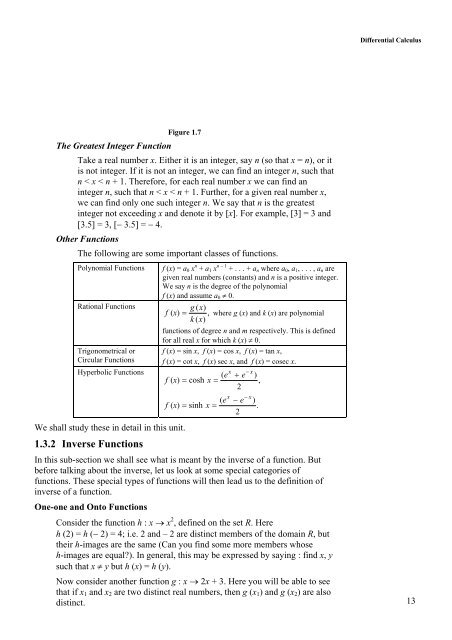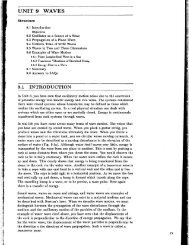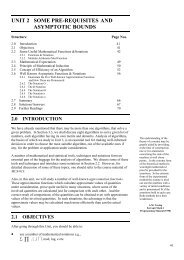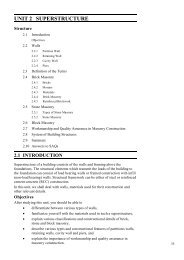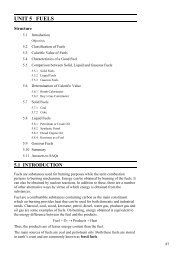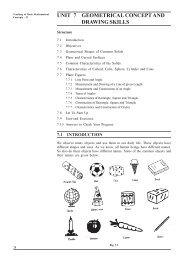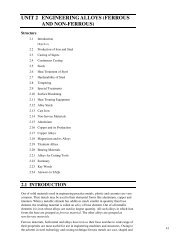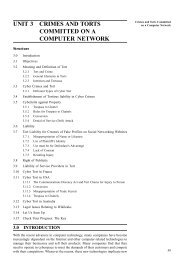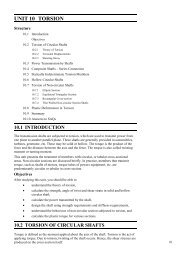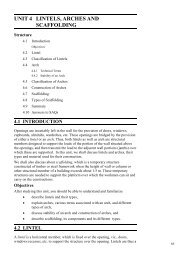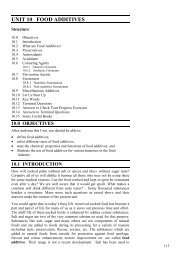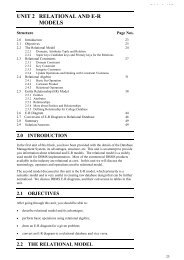unit 1 differential calculus - IGNOU
unit 1 differential calculus - IGNOU
unit 1 differential calculus - IGNOU
You also want an ePaper? Increase the reach of your titles
YUMPU automatically turns print PDFs into web optimized ePapers that Google loves.
The Greatest Integer Function<br />
Figure 1.7<br />
Take a real number x. Either it is an integer, say n (so that x = n), or it<br />
is not integer. If it is not an integer, we can find an integer n, such that<br />
n < x < n + 1. Therefore, for each real number x we can find an<br />
integer n, such that n < x < n + 1. Further, for a given real number x,<br />
we can find only one such integer n. We say that n is the greatest<br />
integer not exceeding x and denote it by [x]. For example, [3] = 3 and<br />
[3.5] = 3, [− 3.5] = − 4.<br />
Other Functions<br />
The following are some important classes of functions.<br />
Polynomial Functions f (x) = a0 x n + a1 x n − 1 + . . . + an where a0, a1, . . . , an are<br />
given real numbers (constants) and n is a positive integer.<br />
We say n is the degree of the polynomial<br />
f (x) and assume a0 ≠ 0.<br />
Rational Functions<br />
g ( x)<br />
f ( x)<br />
= , where g (x) and k (x) are polynomial<br />
k ( x)<br />
Trigonometrical or<br />
Circular Functions<br />
Hyperbolic Functions<br />
We shall study these in detail in this <strong>unit</strong>.<br />
1.3.2 Inverse Functions<br />
functions of degree n and m respectively. This is defined<br />
for all real x for which k (x) ≠ 0.<br />
f (x) = sin x, f (x) = cos x, f (x) = tan x,<br />
f (x) = cot x, f (x) sec x, and f (x) = cosec x.<br />
x − x<br />
( e + e )<br />
f ( x)<br />
= cosh x = ,<br />
2<br />
x − x<br />
( e − e )<br />
f ( x)<br />
= sinh x = .<br />
2<br />
In this sub-section we shall see what is meant by the inverse of a function. But<br />
before talking about the inverse, let us look at some special categories of<br />
functions. These special types of functions will then lead us to the definition of<br />
inverse of a function.<br />
One-one and Onto Functions<br />
Consider the function h : x → x 2 , defined on the set R. Here<br />
h (2) = h (− 2) = 4; i.e. 2 and – 2 are distinct members of the domain R, but<br />
their h-images are the same (Can you find some more members whose<br />
h-images are equal?). In general, this may be expressed by saying : find x, y<br />
such that x ≠ y but h (x) = h (y).<br />
Now consider another function g : x → 2x + 3. Here you will be able to see<br />
that if x1 and x2 are two distinct real numbers, then g (x1) and g (x2) are also<br />
distinct.<br />
Differential Calculus<br />
13


